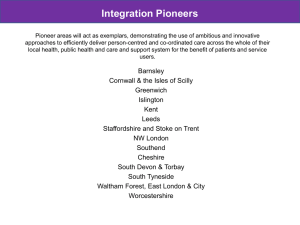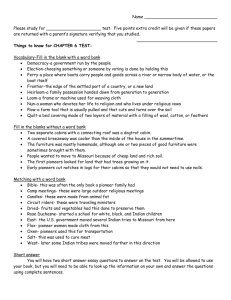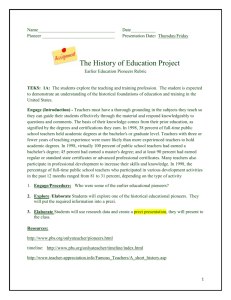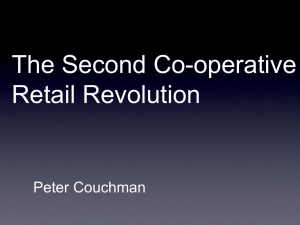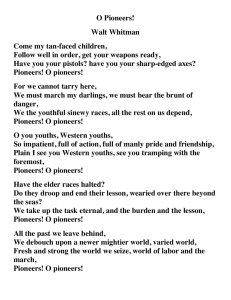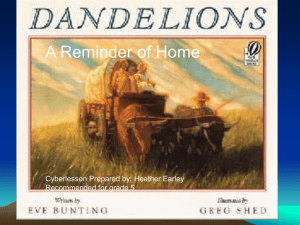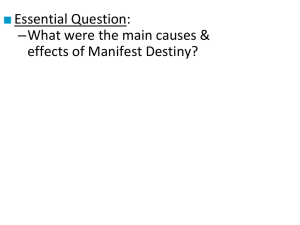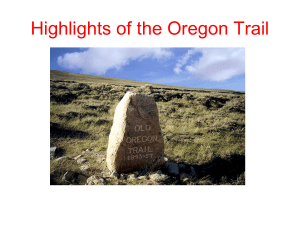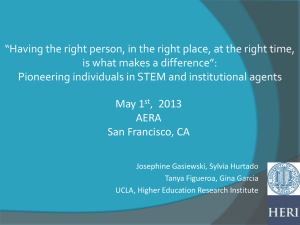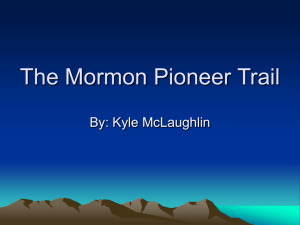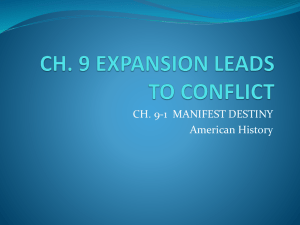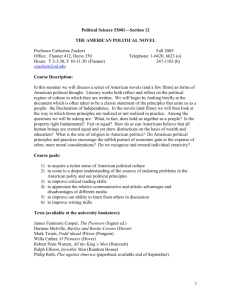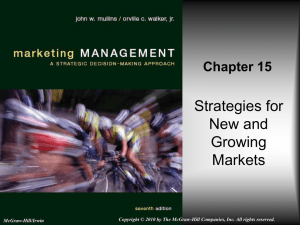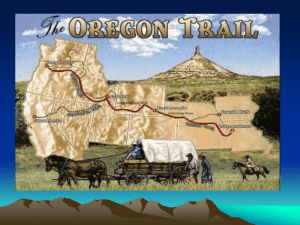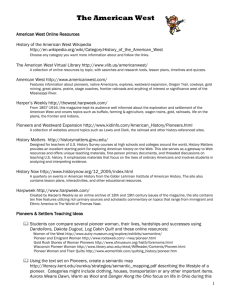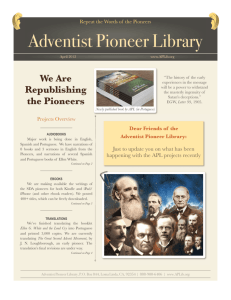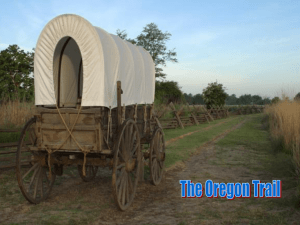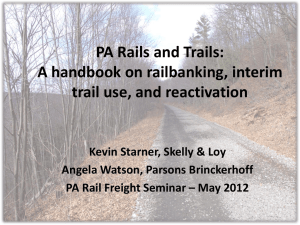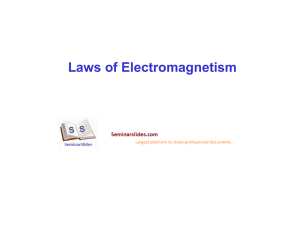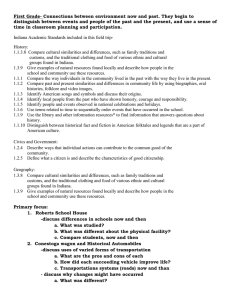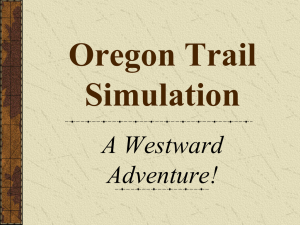The ABCs of Westward Expansion
advertisement
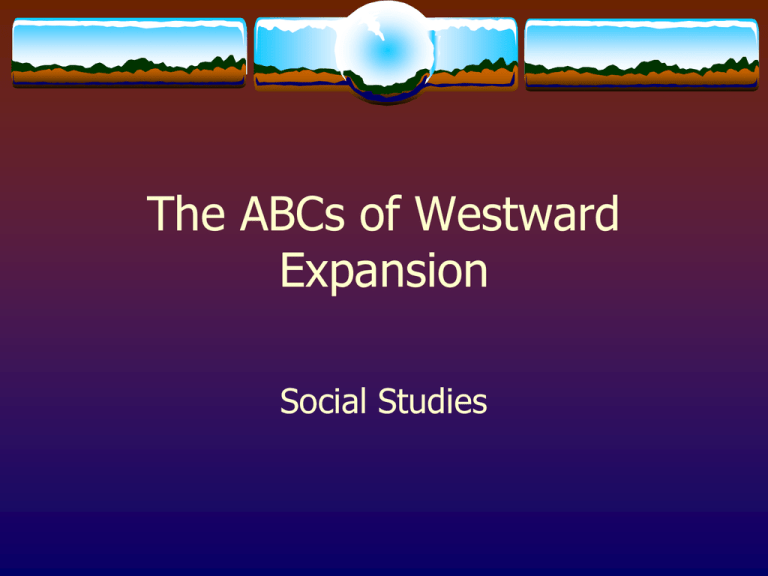
The ABCs of Westward Expansion Social Studies A is for Americans. In the mid 1800s, America began to acquire land to the west of the Mississippi River. Americans believed they should have all of the land between the Atlantic and Pacific Oceans. Americans began traveling west in search of new lands and ”elbow room”. http://www.youtube.com/w atch?v=twFs9Vk6F0A B is for Buffalo Bill William Cody organized the Wild West Show in 1883. The show provided entertainment to pioneers featuring cowboys doing tricks and skilled Native Americans. The Wild West Shows exaggerated frontier life. C is for California Thousands of men traveled to California in the California Gold Rush. Not many struck it rich, but they did return home with adventure stories. D is for Death Many people died traveling the Oregon Trail. Historians estimate that 10% of all pioneers, or 30,000 people died on their journey. People died from accidents and illnesses like cholera and smallpox. Families had to bury the dead along the trail and continue on without their loved one. E is for Expedition In 1804, President Jefferson sent explorers Meriwether Lewis and William Clark to explore the west. They set out toward the Pacific Ocean with Sacagawea, a Shoshone Indian who acted as a translator and guide. They were the first to journal about the west and record 1,000 varieties of plants and animals. F is for Family Pioneer families often had many children. They needed children to help with all of the chores. Even young children helped to collect wood for the fire and berries and nuts to eat. G is for Gold Rush Thousands of men rushed to California in 1849 in search for gold. They were nicknamed forty-niners. Miners worked hard with little success. Supplies were very expensive and many men went home broke. H is for Homestead Act In 1862, Congress passed the Homestead Act to encourage people to settle the prairies. The law promised free land to people after they had farmed it for five years and built a house on it. I is for Immigrants Thousands of immigrants traveled west as the United States expanded. Chinese and Irish immigrants, in particular, were crucial in building the transcontinental railroad. J is for Jeans Levi Strauss designed sturdy pants for miners so that they could bend, dig, and squat easily. You may even own a pair– blue jeans! K is for Klondike Gold Rush In addition to the California gold strike, many risked their lives in search of gold in Alaska. L is for Locomotive A locomotive is an engine on wheels used to pull railcars. Locomotives transported good, and eventually, people, across the United States. M is for Manifest Destiny Many Americans believed that America had the right to expand as much as possible– it was the fate of the United States to stretch across the continent. This belief was at the expense of Native Americans. N is for Native American Removal As Americans traveled west, the U.S. government ordered troops to forcibly remove Native Americans from their homeland to new reservations. O is for Oregon Trail Families spent at least four months traveling the difficult western terrain on horseback and in Conestoga wagons. P is for Pony Express This was a famous mail route that ran from Missouri to California. It was a relay of brave riders that raced letters 2,000 miles in ten days. After just nineteen months in existence, the Pony Express was replaced with a new invention– the telegraph. Q is for Queasy The food the pioneers ate may not have sat well with your stomach! Muddy river water or contaminated wells provided water while insects dropped into cooking pots and supplies like sugar and flour quickly became moldy along the way. Dry buffalo dung provided fuel in the empty prairie. R is for Religion Missionaries were some of the first to travel west. The Spanish set up missions to spread their Roman Catholic religion to the Native Americans in the southwest. Twenty-one Spanish missions were established in California during the 18th and 19th centuries. Santa Fe Trail The Santa Fe Trail was a road through the prairies and mountains from Missouri to Santa Fe. The trail linked the United States and Mexico. T is for Transcontinental Railroad After the Civil War, the Transcontinental Railroad was constructed by immigrants. This made traveling easier from coast to coast. The negative effects were resistance from American Indians and displacing buffalo. U is for United States In the 1840s eastern cities were becoming crowded with Europeans. Many Americans decided to explore the west. Those pioneers left their “pioneering spirit”- curiosity, hard work, determination, resourcefulness, and a love of freedom. V is for Voting Pioneer families traveled westward in a wagon train so that they could help one another. Early on, the men voted to elect leaders who helped maintain order and set the rules. W is for Westward Expansion 1. 2. 3. Pioneers moved west in three waves: From the 1770s to 1800s pioneers crossed the Appalachian Mountains and to the Ohio River Valley. During the 1840s-1860s, Pioneers traveled west to Oregon and California. In the 1860s, pioneers settled on the Great Plains. X is for Oxen Oxen were used to pull Conestoga wagons on the Oregon Trail. Oxen suffered through the desert as they only eat grass, though they were found to be stronger than mules. Y is for Yoke A yoke is wooden bar used to join the heads of two working animals. Pioneers yoked oxen together when they were harnessed to a wagon. Z is for Zebulon Pike Zebulon Pike explored the Louisiana Territory, Colorado, and New Mexico. Pikes Peak in Colorado was named after Pike. Pioneer Songs Oh Susanna http://www.youtube.com/watch?v=EzzPPu6crQE Home on the Range http://www.youtube.com/watch?v=YFVGwviAaWE Old Dan Tucker http://www.youtube.com/watch?v=S-GHbDFrwlU http://www.youtube.com/watch?v=gDi75H1pOAc Bibliography Going West by Carol Johmann Pioneer Life in the American West by Christy Steele Pioneers, A Library of Congress Book by Martin W. Sandler The Oregon Trail by R. Conrad Stein You Wouldn’t Want to Be an American Pioneer by You Wouldn’t Want to Work on the Railroad by Ian Jacqueline Morely Graham All pictures found on Google Images.
